by aramatzne@gmail.com | 25 Feb 2018 | Roads Taken
Part 2 in a series of journal excerpts from time in the Arctic
**note: photos in these posts are from scanned slides… that desperately needed to be cleaned…
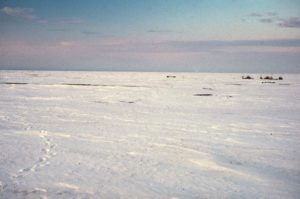
Cooper Island Camp
I never cease to amaze myself. I am comfortably ensconced in a mostly dry, not very large tent on a small patch of open ground on a large, flat, frozen-in island. The land, the water, and the sky look all the same. From the sand and gravel that stretch ten feet in front of the tent the snow begins and goes on until it merges seamlessly with the pack ice. The pack ice, in turn, merges with sky somewhere along an indistinct horizon.
Now that I have found pseudo fly poles for the tent, I sit with my camera on the tripod attempting to lure snow buntings and a hapless white-crowned sparrow to eat leftover rice and a handful of dry oatmeal. They sneak in and disappear again before I realize my chance is gone.
The rain sounds nice but I am glad to be out of it. It is 33ºF, 0530, and the sun has been up since 10 May. That sounds funny. It hardly gets any less light at night than during the day – there is a different quality to the light, it is flatter and offers less contrast to the world. Though I have hardly seen the sun, as it has been cloudy and gray since I got here, it is fascinating to see it circle the horizon – the 360º horizon. Yesterday there was an immense, distinct sundog which I praised and was thankful for. It didn’t occur to me that it would bring rain. The mackerel sky tipped me off on that.
So, how did I arrive here? My usual convoluted way. Cool, I’ll go to Alaska for the summer. Indeed. I arrived in Barrow, via Detroit, Seattle, and Fairbanks. It was 20º when I arrived. Not bad for the 28th of May. I guess that is even cold by Alaska standards for so late in the spring. My boss, George, and I stayed at the research facility in Barrow one night. Collected up all the gear we hadn’t already gathered in Fairbanks, bought more food, raided the facility stock room and, with the help of two research staff, piled everything onto two snow machine sleds, piled ourselves on – two driving, two (including me) standing at the sled back – and set out across Elson Lagoon to my summer home away from home, Cooper Island.
It was interesting to come across the great flat water, the sleds moved across, around, and through the pressure ridges in the ice. It was trackless, with exception of some fox tracks, there were no landmarks, no sun in the heavy sky to guide us, and yet we mostly made a straight line to the island, 25 miles east of Barrow. Flocks of common eiders, low to the frozen surface, crossed the horizon. Greater white-fronted geese talked their way across the sky.
We set up the tents, stowed gear, and set up the polar bear perimeter alarm. The research guys headed back to Barrow. George and I were left on a flat, featureless island.
It was mostly still under snow and, except for a few bare spots, in one of which we set up the tents, it was hard to believe that it was any different than the pack ice on the lagoon. Apparently, one year George actually did set up the tent on the pack ice, not realizing the island shore was 50 yards away. Oops.
George showed me the island, briefed me on what I need to do over the next two weeks while he is away and two days later he took the snow machine back to Barrow. So it comes to pass that I am alone on a barrier island in the Arctic Ocean. Frozen into the lagoon, frozen into the island, and for all practical purposes, frozen into time.
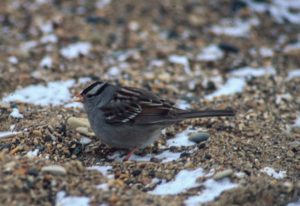
The hapless white-crowned sparrow.
Join me this fall on The Road not Taken Enough when I go to Svalbard on an Arctic Circle residency Artistry in the Arctic.
by aramatzne@gmail.com | 21 Feb 2018 | Musing
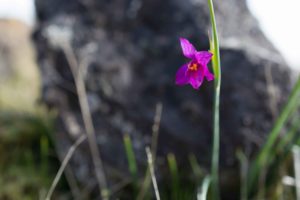
A grass widow on Lower Table Rock, Oregon.
Spring arrived before winter, and it came in dayglow.
by aramatzne@gmail.com | 18 Feb 2018 | Roads Taken
In preparation for my upcoming residency with The Arctic Circle in September and October, I will post a series of photos and journal entries from previous time spent in the Arctic. I hope you enjoy this introduction and I hope you’ll join me here this fall when The Road not Taken Enough returns to the Arctic. xoxo T
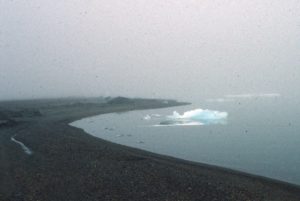
The fog
Part 1 – Sensory deprivation
I’ve been walking since I got up this morning. And eating of course. The wind and rain of the other day passed finally. Yesterday was foggy and freezing. Everything was covered with a thin sheet of ice. It lifted briefly in the afternoon and got warm for a spell.
This morning when I awoke the air was absolutely dead calm and the fog as thick as it has ever been. And so, I walked, and took photos, and walked more. There is an absolute silence and stillness to the world that is unmatched by anything I’ve ever heard or felt. Even intensely cold days in the north woods have a feeling of motion. This is absolute.
There is sensory deprivation on two levels, sound- except for a few birds, my own footsteps and the almost imperceptible wash of water on the shore, but these things you must work to hear. And visual deprivation -the water, both the lagoon and the ocean, is so utterly calm that they perfectly mirror the sky and the fog, so all sense of a horizon or a division between land and water is gone.
All sense that you are seeing anything at all is gone. If my mind didn’t override my visual input and tell me about the fog I should think I was going blind. Visibility is very low across the land but to stand on the edge of the water and look into the great grey void created by the sky and water uniting in color and texture is to truly experience emptiness. And to feel as if I am on the edge of the world.
Now and then, on the lagoon side, a dark spot that is a loon or a long-tailed duck will break free of the fog and show itself giving a definitive life to the water and proving that there is more than one dimension to the space in front of me.
On the ocean side, there are icebergs looming in the water, moving imperceptibly across the surface. And often, they calve. The sound travels through the fog, across the water, that distorted fog sound. But to look out to the ocean there is no change, no motion, no acknowledgment by the water or the air that the balance between ice and water has shifted. Only silence once again.
Occasionally a red-throated loon gives its eerie, raspy, almost desperate call, though no loon is in sight. I know it is out among the icebergs, bill pointed up to the foggy sky and its head cocked to one side or the other, listening into the silence for an answer, or for any sound. Some proof that the rest of the world still exists and it isn’t only in the imagination that there was once wind and motion, sounds of water washing against the shore, or the persistent calls of numerous other birds.
I took many photos of this deprivation of sight. Some hard fast object in the foreground with the limitless depths of fog gray void behind. How does one record the lack of something to see with a camera? I’m not sure. If there is anything to see in my photos, any depth or contrast, any color, any motion, they will be stupendous indeed. If not, they will be flat, gray, ambiguous portraits of just what I sought to record, the lack of something to see.
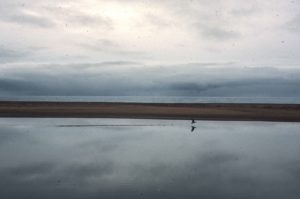
Take off
Join me this fall on The Road not Taken Enough when I go to Svalbard on an Arctic Circle residency Artistry in the Arctic.
by aramatzne@gmail.com | 31 Jan 2018 | Musing
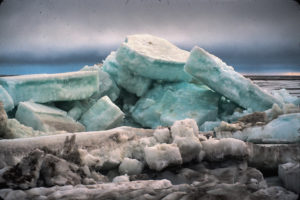
Sea ice break up
The Philosophy
We put thirty spokes together and call it a wheel;
But it is on the space where there is nothing that the usefulness of the wheel depends.
We turn clay to make a vessel;
But it is on that space where there is nothing that the usefulness of the vessel depends.
We pierce doors and windows to make a house;
And it is on these spaces where there is nothing that the usefulness of the house depends.
Therefore just as we take advantage of what is, we should recognize the usefulness of what is not.
Dao de jing
The science and art
The first time I went to the Arctic, I rode to the island that would be my summer home on the back of a cargo sled pulled by a snowmobile. It was the last weekend in May 2000.
Two snowmobiles, two cargo sleds, four people moved across the open ice of the Arctic Ocean, flat, cold, and boundless. Flocks of eiders and long-tailed ducks hung low along the horizon following their ancient rhythms to nesting grounds still frozen into the tundra.
The majority of that summer I lived on the island alone. It snowed, it rained, there was fog, there was a hurricane, the wind rarely ceased. And I was in frozen heaven.
In our over-caffeinated, over-extended, over-scheduled lives, the Arctic is the space upon which the usefulness of the world relies.
Out of sight to most, it is one of the great regulating factors of the Earth. Now more than ever its vast emptiness is useful to us all.
Formally trained as a biologist, I recently expanded my focus to include writing and photography as a means of connecting more people with the wild world. Combining these skills is a way of fostering innovative thinking and dialogue between people and disciplines with the intent of bringing positive change to the environment. To that end, I applied for and was accepted to an art and science residency titled The Arctic Circle in Svalbard, Norway, in fall 2018.
I intend to create a written and photographic weaving of my journals from my earlier time spent in the Arctic, with climate change science, and the experience of returning to the Arctic as a writer and photographer 18 years after my first visit as a biologist.
The request
I have started a GoFundMe campaign, Artistry in the Arctic, to help fund this expedition. I am requesting funding to cover the residency fee, airfare, and a few necessary expenses of autumn in the Arctic. Generous friends and family, some of them brand new friends and family, have already donated almost enough to cover the deposit due in March. Please consider contributing any amount you are able. Small donations add up, and with your help, we will all go to the Arctic for a new adventure as – internet access dependent – I will post as much as I can along the way.
I set rewards for different donation levels – your choice of any photo that I post during the trip, signed and delivered to you.
For more information and to donate, please visit:
Thank you. Thank you. Thank you.
xoxo T
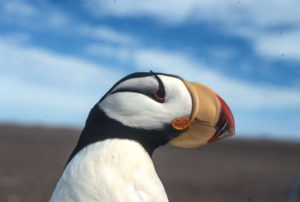
Puffin in the house
by aramatzne@gmail.com | 29 Dec 2017 | Musing
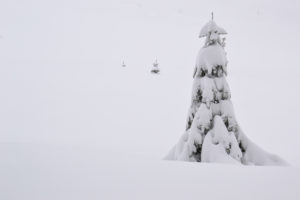
The winter mind.
It seems my mind is both full and empty.
I think about a time when my neck doesn’t hurt, and the tendons don’t grind – these days are both past and future.
I think about Big Cat, a cat the color of fallen oak leaves.
There is blank space where my mind struggles to find something to think.
I think about —- and his careful and attentive questions about my well-being.
I think about —–, how I will get the job there. How I will be if I haven’t gotten the job.
I think about the oaks and pines outside my window and the pieces of the sky I see through their bare branches and needles.
I try to think of something to write, and I see nothing.
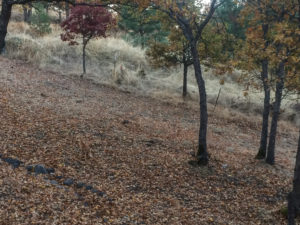
A cat the color of fallen oak leaves.
I think about visible and unrecognizable, the words that chose me for 2017. I wonder what words 2018 will bring me. I don’t see them. My mind says I can’t see them. Maybe they will see me as 2017’s words did.
Enough comes to mind. As in, “I am enough,” or “I have enough,” or “This is enough.” I am content to let this sit for now. It is enough.
A more visceral part says to me, “No. All this is true. And I am more. I can do more. I can be more.”
Enough and more? Similarly contraindicated as visible and unrecognizable. Not opposites. Not opponents. Co-workers. Collaborators. Co-conspirators.
Becoming visible was an act that made me unrecognizable to many. Becoming unrecognizable allowed me to be visible to many more.
Being enough can allow me to be more. Being more offers enough to others.
Yes. Maybe these are the words I need.
I am enough. We are all enough.
I have always been enough. We all have always been enough.
I have more. I am more. I offer more. Striving for more opens me to…
I go back to the blank mind. There are pieces of thoughts, glimmers of ideas floating about in there. I can almost see them. I can’t quite feel them. Beyond the list of what to do today, tomorrow, and next week, there are much grander thoughts. They need to be let out. Hoarding them produces a feeling of scarcity – if I let this into the world, there will never be another, and I will be without grand ideas. No. That’s not right. Letting them out into the world brings them friends and community. It allows expansion, the ideas grow and multiply.
Here is an idea:
What if each of us believes that we are enough?
And,
What if each of us believes that every other person is also enough?
We would all have more.









